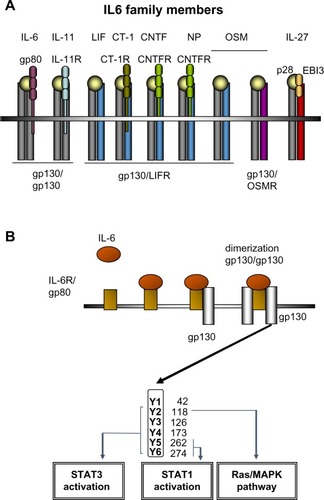Figures & data
Table 1 Role of interleukins in experimental mouse models of chronic liver diseases (selection)
Figure 1 The IL-6 cytokine family and IL6 signaling in the liver.
Abbreviation: R, receptor.

Figure 2 Role of interleukins in development of liver fibrosis.
Abbreviations: Eo, eosinophilic granulocyte; hepa, hepatocyte; ILC, innate lymphoid cell; KC, Kupffer cell; LSEC, liver sinusoidal endothelial cell; MFB, myofibroblast; TC, T cell; Th, T helper.

